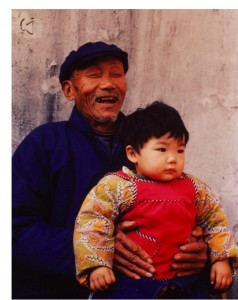China: A view from the back of a galloping horse
Much of the world will form opinions about China from the legions of mainstream broadcasters and journalists descending on Beijing for the Olympics. A lot of it is an exercise in first impressions, Western perspective and cultural context.
Thirty years ago I toured China as a young reporter covering the first U.S. trade mission to a Chinese province. I was one of the first American reporters to enter the nation following the reestablishment of relations with the U.S. I traveled for a month in Beijing, Shanghai, Wuhan, and the villages of Hubei province.

Old China and new, 1978. Photo by Dale Peskin
It was there that I began to formulate ideas that would become We Media. A stranger in a strange land, I was the first white-skinned person that most Chinese had seen. Many came up to me, gently poking my hand with their finger to see if I felt as different as I looked. They crowded around me as I wandered the streets searching out the one Western Union office where I could file stories on a teletype machine. I did not speak their language; they did not speak mine. Somehow they managed to help me find my way. At first intimidated by each other, we somehow came to respect and understanding. For no reason at all, I trusted them and they trusted me. That is how I learned about China. For years thereafter I periodically communicated with friends and journalists there.
My Chinese guide, a wise man who became a friend, described my shallow understanding of China, its culture, and its people this way: “You are looking at a four-leaf clover from the back of a galloping horse.”
A patient civilization suddenly in a hurry, China 08.08.08 seems as much changed as it is the same. I am sure I don’t fully understand either the sweep of change or the complexity of it. But I do recognize that the story on TV, in magazines, and in newspapers is coming from the back of a galloping horse.



